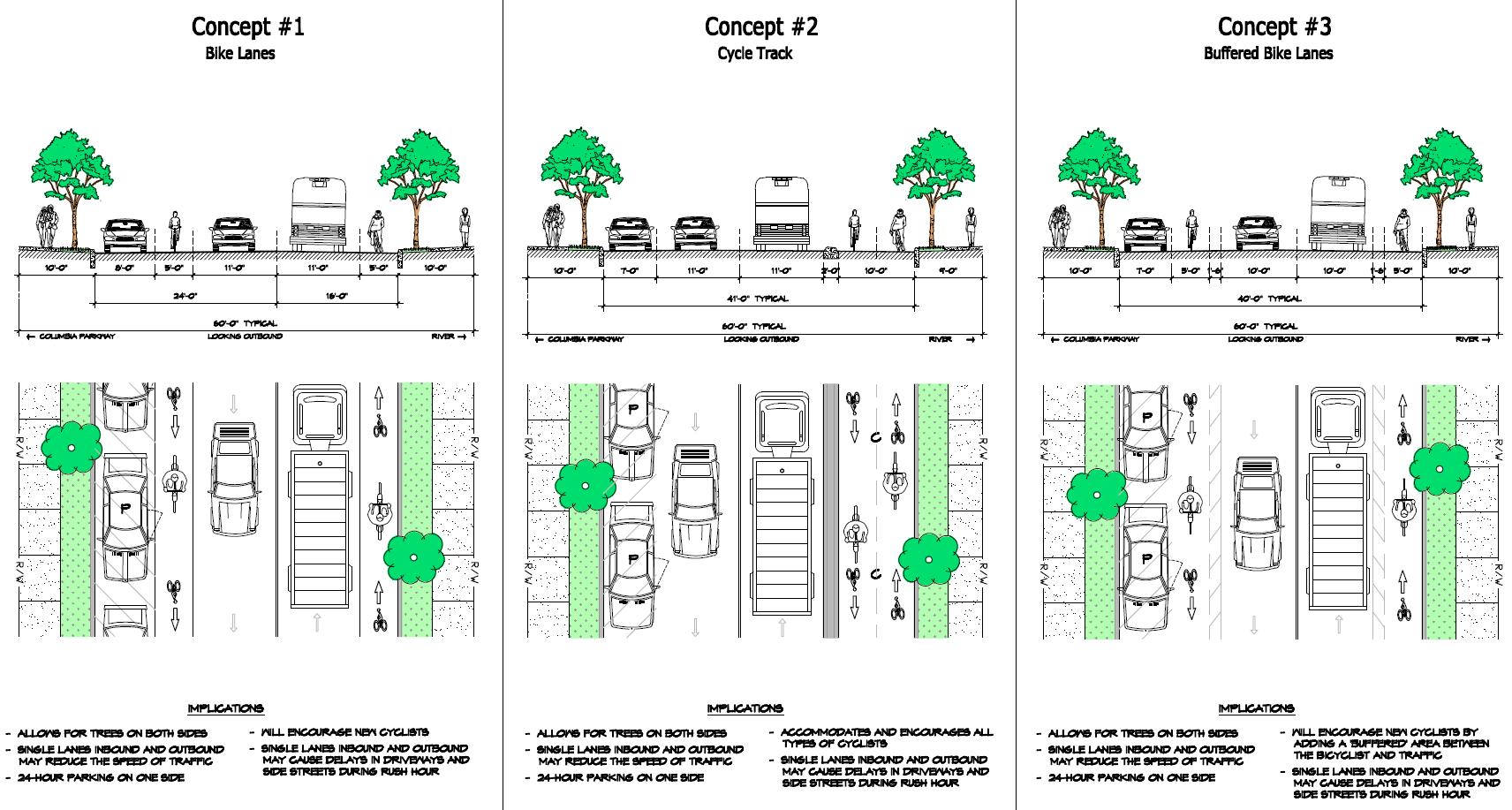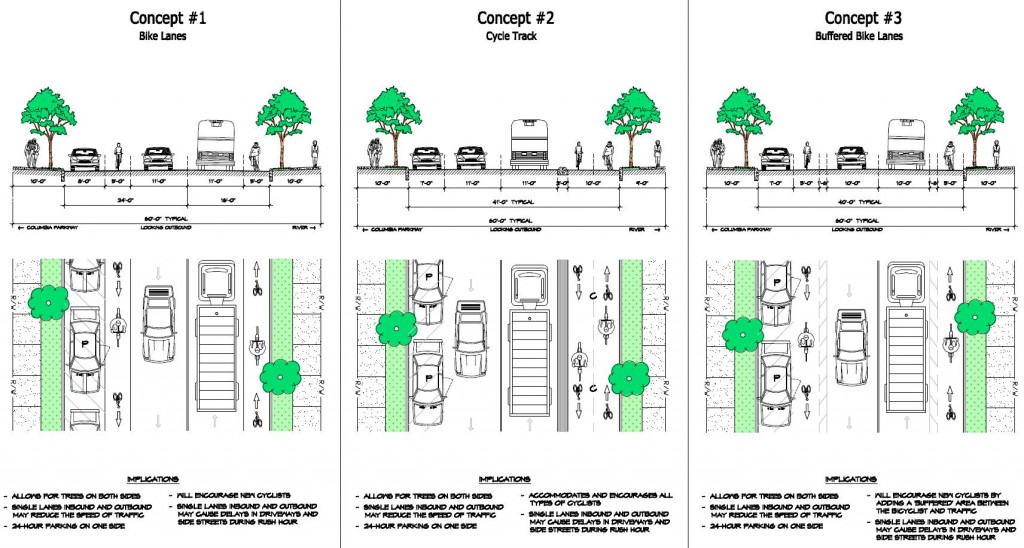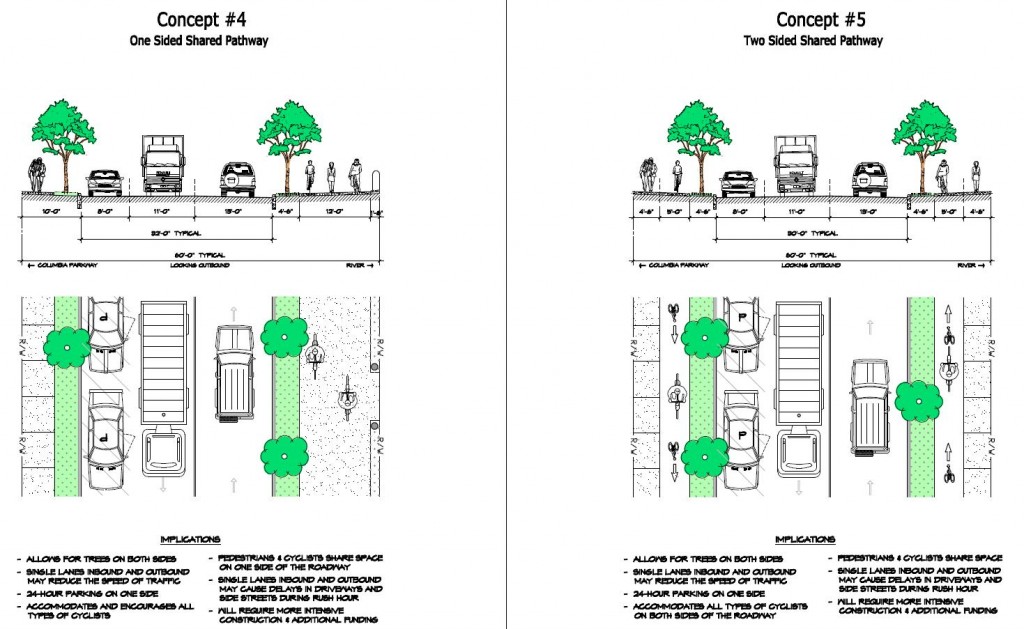The City of Cincinnati is examining how to improve bicycle conditions along Riverside Drive through the East End neighborhood. Data shows that the corridor is popular for both recreational and commuter bicyclists, but that the heavy traffic along the roadway makes it unsafe or uncomfortable for many potential riders.
“We’re continuously looking for ways to improve the quality of life for residents, and enhance neighborhoods in ways that are more in line with our community’s interests in walkable, bike-friendly and sustainable neighborhoods,” said Matthew Andrews, Acting Principal Architect with Cincinnati’s Department of Transportation & Engineering. “But due to the complexities of this corridor, we are really interested to see what kind of feedback we can get from the public.”
Such complexities include that approximately 10 percent of all traffic along U.S. 52 is dangerous truck traffic thanks to a national truck corridor designation. DOTE officials also say that recent studies show that while the posted speed limit is 35mph, the average vehicle is zipping through the area at 46mph.
But while some solutions seem obvious – separated bike lanes, traffic calming features – the larger picture is making things more difficult. The ongoing Ohio River Trail will eventually create a separated bicycle path that will accommodate both recreational and commuter bicyclists, but officials do not know when that might be or how it is executed. As a result, the City is looking at potential fixes now and is hoping the public can help come up with a solution.
The City is currently soliciting feedback on five potential solutions that include everything from dedicated bike lanes, a separate path, cycle tracks, and a combination thereof. Those interested in providing feedback on the potential solutions are encouraged to do so by Thursday, September 30 so that officials can narrow down the list of concepts and do further analysis in early October.


